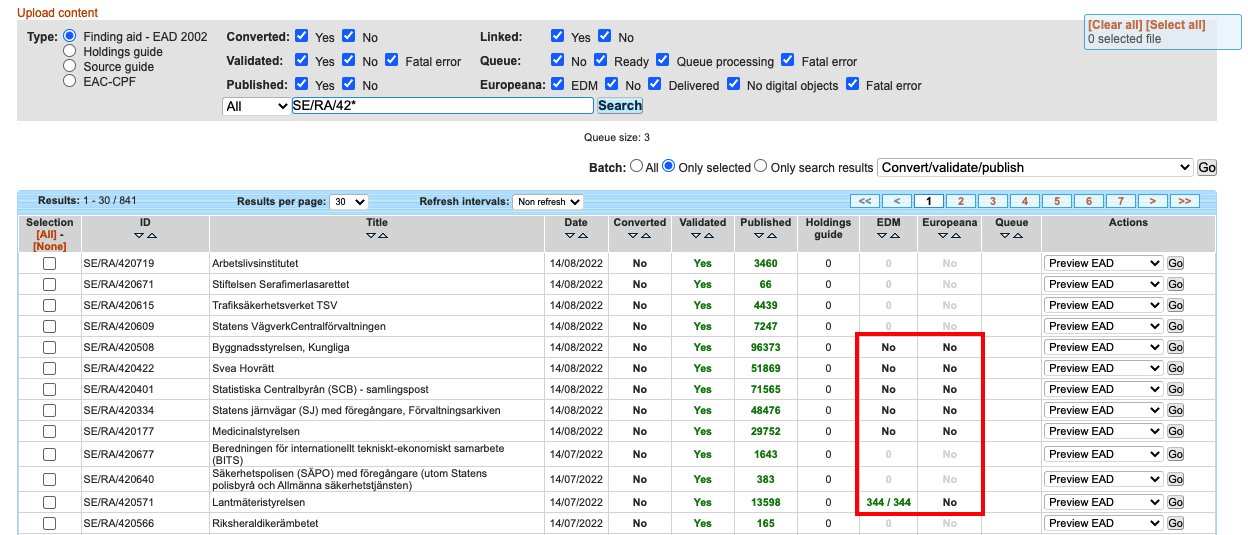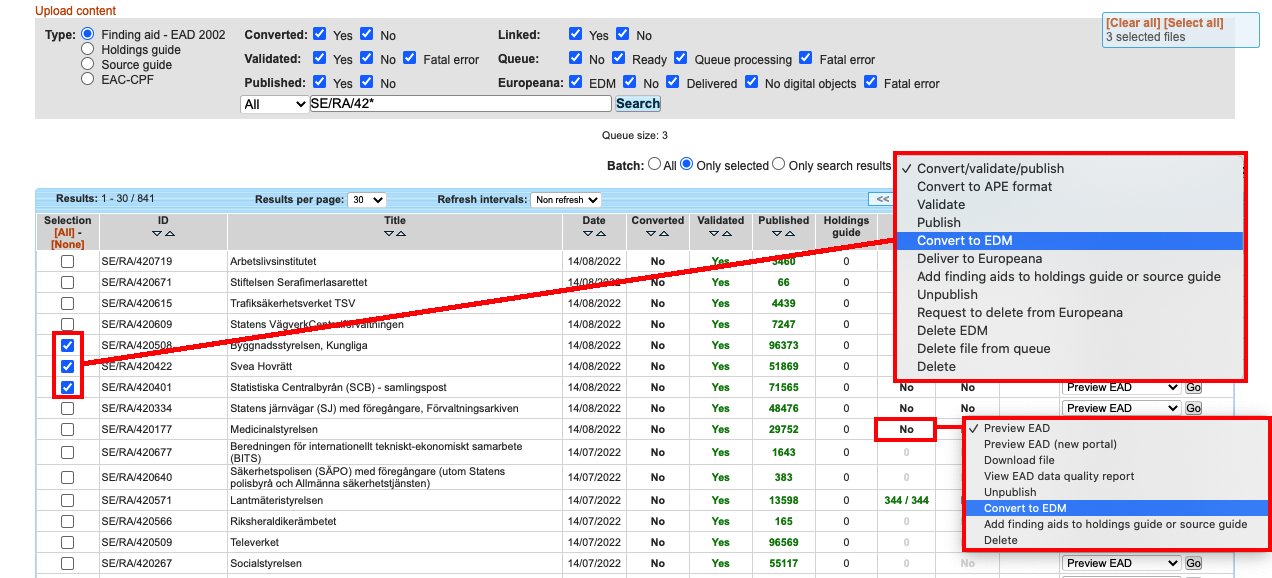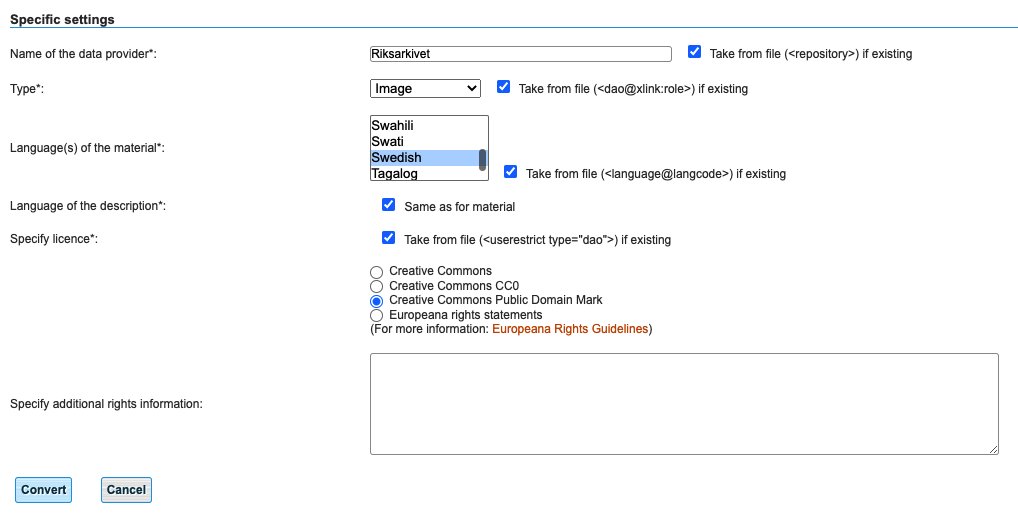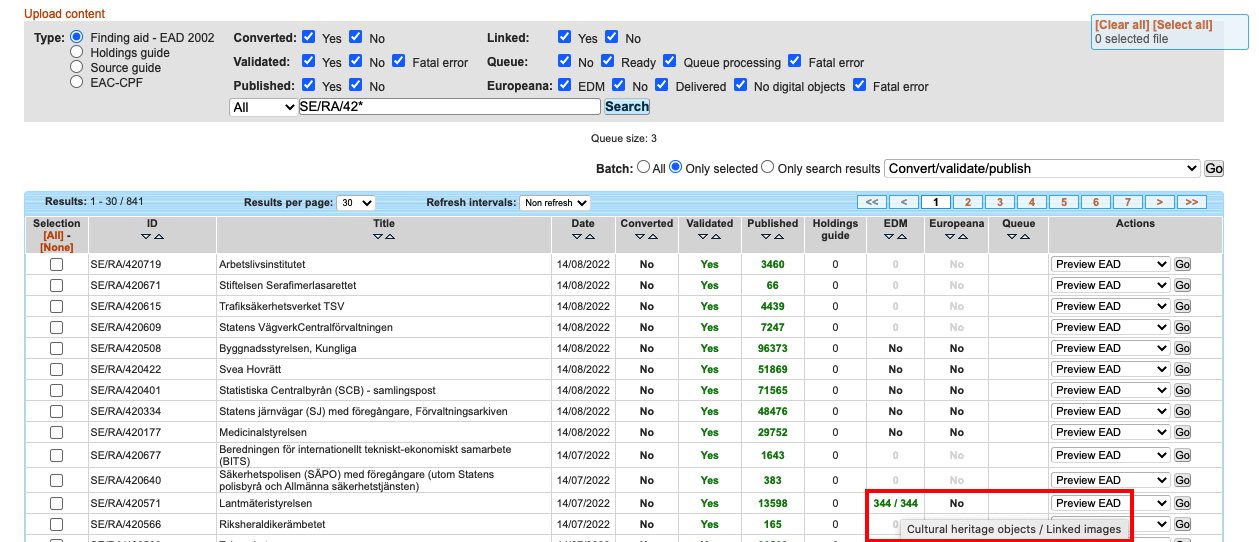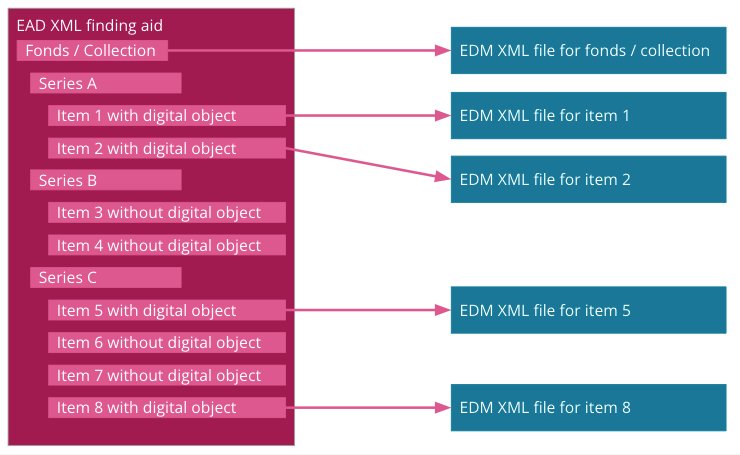Converting archival metadata to EDM
Archives Portal Europe is the aggregator for the European archives community to Europeana, which collects and publishes digital objects and metadata from all kinds of European cultural heritage institutions (archives, audio-visual institutions, galleries, libraries, museums, etc.). In order to forward your data to Europeana, your institution should have signed Europeana's Data Exchange Agreement and you should be aware that this also means you will be sharing your metadata under the CC0 licence (Creative Commons Public Domain Dedication).
Furthermore, Europeana uses its own metadata model, the Europeana Data Model (EDM), so when forwarding content to Europeana via the Archives Portal Europe there are two things to be taken care of: first you should be able to select content which qualifies to be forwarded to Europeana, so those materials including links to digitised or born-digital content, and secondly, the metadata that is about these digital objects should be converted from apeEAD to EDM.

